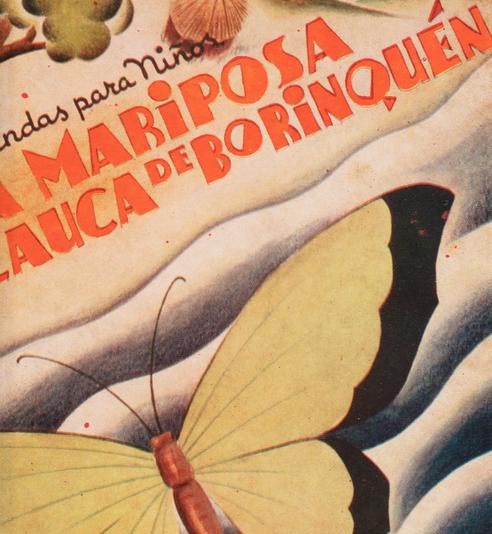
Primary sources are texts, images, audiovisual recordings, or other materials produced during the time period and in the place an essay, research paper, or project analyzes.
Primary sources can include (but are not limited to): novels, poems, films, or magazines, diaries or journal entries that a scholar uses as evidence to analyze a topic. They can also include newspaper articles written at the time of the event, diaries or journals, letters or other correspondence, transcriptions or recordings of speeches, audiovisual recordings of an event, photographs, artwork, government records, business ledgers or files, or maps. Oral history interviews about a person's firsthand experiences are another kind of primary source. Scholars examine and use primary sources as evidence to support their argument or analysis of a topic.
Caribbean Digital Primary Source Collections
Digital Library of the Caribbean
The Digital Library of the Caribbean (dLOC) comprises collections that speak to the similarities and differences in histories, cultures, languages and governmental systems. Types of collections include but are not limited to: newspapers, archives of Caribbean leaders and governments, official documents, documentation and numeric data for ecosystems, scientific scholarship, historic and contemporary maps, oral and popular histories, travel accounts, literature and poetry, musical expressions, and artifacts. English, Spanish, and French
Catalog of Digital Historical Newspapers (NewspaperCat)
 The Catalog of Digital Historical Newspapers (NewspaperCat) is a tool that facilitates the discovery of online digitized historical newspaper content from newspapers published in the United States and the Caribbean. NewspaperCat was funded by a grant from the George A. Smathers Libraries at the University of Florida. English with Spanish and French materials
The Catalog of Digital Historical Newspapers (NewspaperCat) is a tool that facilitates the discovery of online digitized historical newspaper content from newspapers published in the United States and the Caribbean. NewspaperCat was funded by a grant from the George A. Smathers Libraries at the University of Florida. English with Spanish and French materials
Latin American Digital Primary Source Collections
Biblioteca Digital Hispánica
 The Hispanic Digital Library of the Biblioteca Nacional de España provides access free of charge to thousands of digitized documents, including books printed from the 15th to the 20th century, manuscripts, drawings, engravings, pamphlets, posters, photographs, maps, atlases, music scores, historic newspapers and magazines and audio recordings. It includes materials not only from Spain but also from Latin America. Mostly Spanish, navigation available in English, Catalan, Euskara, Galician, and French
The Hispanic Digital Library of the Biblioteca Nacional de España provides access free of charge to thousands of digitized documents, including books printed from the 15th to the 20th century, manuscripts, drawings, engravings, pamphlets, posters, photographs, maps, atlases, music scores, historic newspapers and magazines and audio recordings. It includes materials not only from Spain but also from Latin America. Mostly Spanish, navigation available in English, Catalan, Euskara, Galician, and French
Biblioteca Hispánica
 The Bibloteca Hispánica includes humanities and social science collections focused on Latin America and the Philippines. It includes materials on Spanish colonization in the Americas, Catholic Spanish kings, and conversion to Catholicism in the Americas. The oldest text in the collection is Coronica de las indias: la historia general de las indias, published in Salamanca in 1547. Spanish
The Bibloteca Hispánica includes humanities and social science collections focused on Latin America and the Philippines. It includes materials on Spanish colonization in the Americas, Catholic Spanish kings, and conversion to Catholicism in the Americas. The oldest text in the collection is Coronica de las indias: la historia general de las indias, published in Salamanca in 1547. Spanish
Center for Research Libraries
 The Center for Research Libraries collection includes digitized newspapers and magazines from Latin America. It also features an archive of domestic and foreign newspapers on microfilm, which can be borrowed through the library's Interlibrary Loan service. English, includes Spanish and Portuguese materials
The Center for Research Libraries collection includes digitized newspapers and magazines from Latin America. It also features an archive of domestic and foreign newspapers on microfilm, which can be borrowed through the library's Interlibrary Loan service. English, includes Spanish and Portuguese materials
Digital Archive of Latin American and Caribbean Ephemera
 The Digital Archive of Latin American and Caribbean Ephemera is a growing repository containing a previously unavailable subset of Princeton’s Latin American Ephemera Collection as well as newly acquired materials being digitized and added on an ongoing basis. The bulk of the materials currently found in the Digital Archive were originally created around the turn of the 20th century and after. The formats most commonly included are pamphlets, flyers, leaflets, brochures, posters, stickers, and postcards. These items were originally created by a wide array of social activists, non-governmental organizations, government agencies, political parties, public policy think tanks, and other types of organizations in order to publicize their views, positions, agendas, policies, events, and activities. English, Spanish, and Portuguese
The Digital Archive of Latin American and Caribbean Ephemera is a growing repository containing a previously unavailable subset of Princeton’s Latin American Ephemera Collection as well as newly acquired materials being digitized and added on an ongoing basis. The bulk of the materials currently found in the Digital Archive were originally created around the turn of the 20th century and after. The formats most commonly included are pamphlets, flyers, leaflets, brochures, posters, stickers, and postcards. These items were originally created by a wide array of social activists, non-governmental organizations, government agencies, political parties, public policy think tanks, and other types of organizations in order to publicize their views, positions, agendas, policies, events, and activities. English, Spanish, and Portuguese
Slavery, Abolition, and Social Justice
 The Slavery, Abolition, and Social Justice resource includes primary sources about the history of enslavement in the Atlantic world. It is designed for both teaching and research use, and includes extensive coverage of topics such as the African coast; the Middle Passage; the varieties of enslaved experiences (urban, domestic, industrial, farm, ranch and plantation); spiritualism and religion; resistance and revolts; the Underground Railroad; the abolition movement; legislation; education; the legacy of enslavement and enslavement today. English
The Slavery, Abolition, and Social Justice resource includes primary sources about the history of enslavement in the Atlantic world. It is designed for both teaching and research use, and includes extensive coverage of topics such as the African coast; the Middle Passage; the varieties of enslaved experiences (urban, domestic, industrial, farm, ranch and plantation); spiritualism and religion; resistance and revolts; the Underground Railroad; the abolition movement; legislation; education; the legacy of enslavement and enslavement today. English
UConn Archives and Special Collections
 UConn Library's Archives and Special Collections (ASC) includes several collections of rare books, journals, and government records relevant to Latin America and the Caribbean. The majority of the collections are accessible through an in-person visit to the archive, and several of these collections have been digitized. The tabs above include additional information about several relevant collections. Visit the Archives and Special Collections website for additional information about access and planning your visit.
UConn Library's Archives and Special Collections (ASC) includes several collections of rare books, journals, and government records relevant to Latin America and the Caribbean. The majority of the collections are accessible through an in-person visit to the archive, and several of these collections have been digitized. The tabs above include additional information about several relevant collections. Visit the Archives and Special Collections website for additional information about access and planning your visit.
 The Latin American Newspapers collection includes approximately 2000 titles of the Latin American and Caribbean newspapers. The collection is strongest for the late nineteenth century and contains newspapers from virtually every country of Latin America and the Caribbean. The most notable portion of the collection is represented by newspapers from Bolivia. The collection includes a short run of Dia de Gloria published in 1898 in San Juan.
The Latin American Newspapers collection includes approximately 2000 titles of the Latin American and Caribbean newspapers. The collection is strongest for the late nineteenth century and contains newspapers from virtually every country of Latin America and the Caribbean. The most notable portion of the collection is represented by newspapers from Bolivia. The collection includes a short run of Dia de Gloria published in 1898 in San Juan.
 The Puerto Rican Collection, formerly known as the Géigel Family Collection or Géigel Collection was created and maintained by the Géigel Family over three generations. The collection was started by José (Pepe) Géigel Zenón, who was a reporter and well known Puerto Rican intellectual, a relative of the writer Manuel Zenón Gandía, and a personal friend of the writer Alejandro Tapia y Rivera. His son Fernando Géigel and granddaughter Luisa Géigel continued to build the collection.
The Puerto Rican Collection, formerly known as the Géigel Family Collection or Géigel Collection was created and maintained by the Géigel Family over three generations. The collection was started by José (Pepe) Géigel Zenón, who was a reporter and well known Puerto Rican intellectual, a relative of the writer Manuel Zenón Gandía, and a personal friend of the writer Alejandro Tapia y Rivera. His son Fernando Géigel and granddaughter Luisa Géigel continued to build the collection.
UConn ac quired the Puerto Rican collection in the 1980s from Luisa Géigel with the help of historian Francisco Scarano who worked at the university at the time. Selections of the collection have been digitized, including Luisa Gégel's handwritten index of the books.
quired the Puerto Rican collection in the 1980s from Luisa Géigel with the help of historian Francisco Scarano who worked at the university at the time. Selections of the collection have been digitized, including Luisa Gégel's handwritten index of the books.
Additional information the collection is available on the bilingual Colección Digital Puertorriqueña/Digital Puerto Rican Collection guide.
José Geigel Zeón and Fernando Géigel Sabat, Géigel y Zenón, J., Morales Ferrer, A., and Géigel Sabat, F. Bibliografía puertorriqueña. Barcelona: Editorial Araluce, 1934.
 The Puerto Rico Civil Court Documents collection includes more than 10,000 pages of records produced by the Arecibo appellate court district between 1844 and 1900. It includes court cases from the towns of towns of Arecibo, Barceloneta, Camuy, Ciales, Hatillo, Manati, Morovis, Quebradillas, and Utuado.
The Puerto Rico Civil Court Documents collection includes more than 10,000 pages of records produced by the Arecibo appellate court district between 1844 and 1900. It includes court cases from the towns of towns of Arecibo, Barceloneta, Camuy, Ciales, Hatillo, Manati, Morovis, Quebradillas, and Utuado.
The Thomas J. Dodd Research Center acquired the collection in 2000. In 2012, a Latin American Materials Project (LAMP) grant funded digitization of the fragile documents, and the complete collection is viewable online.
Microform Materials
 Microform Collections are located on Level B of the Babbidge Library. These collections consist of microfilm (reels) and microfiche (sheets). They are grouped by format and arranged alphabetically by collection title in the microform cabinets. Microform collections are research materials that cannot be checked out from the library.
Microform Collections are located on Level B of the Babbidge Library. These collections consist of microfilm (reels) and microfiche (sheets). They are grouped by format and arranged alphabetically by collection title in the microform cabinets. Microform collections are research materials that cannot be checked out from the library.


